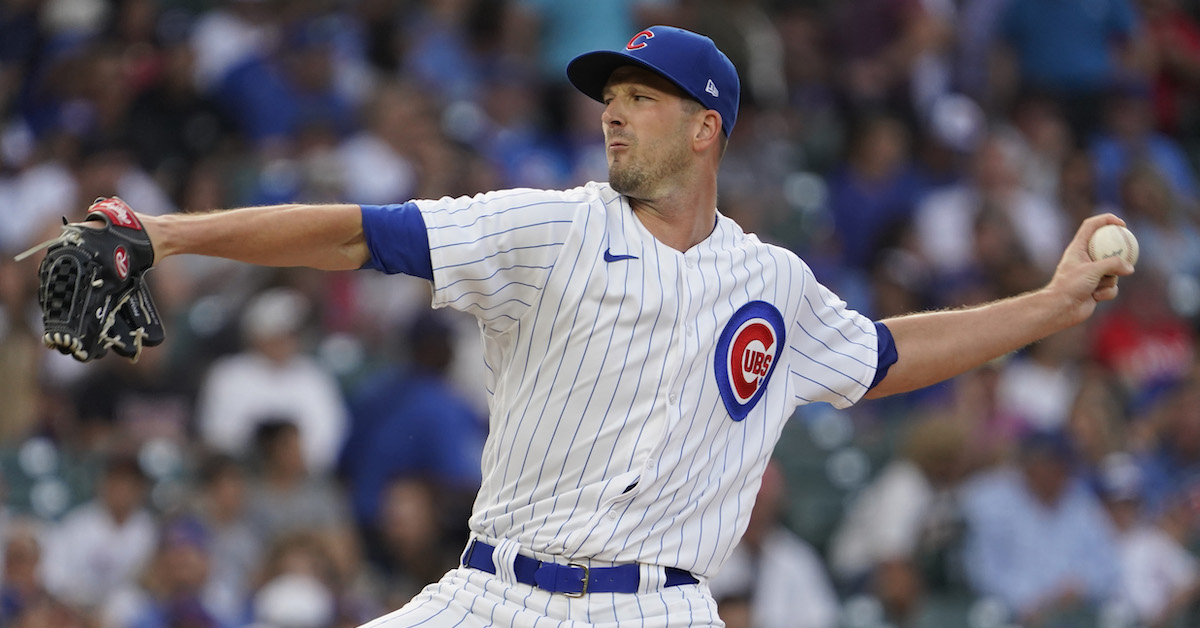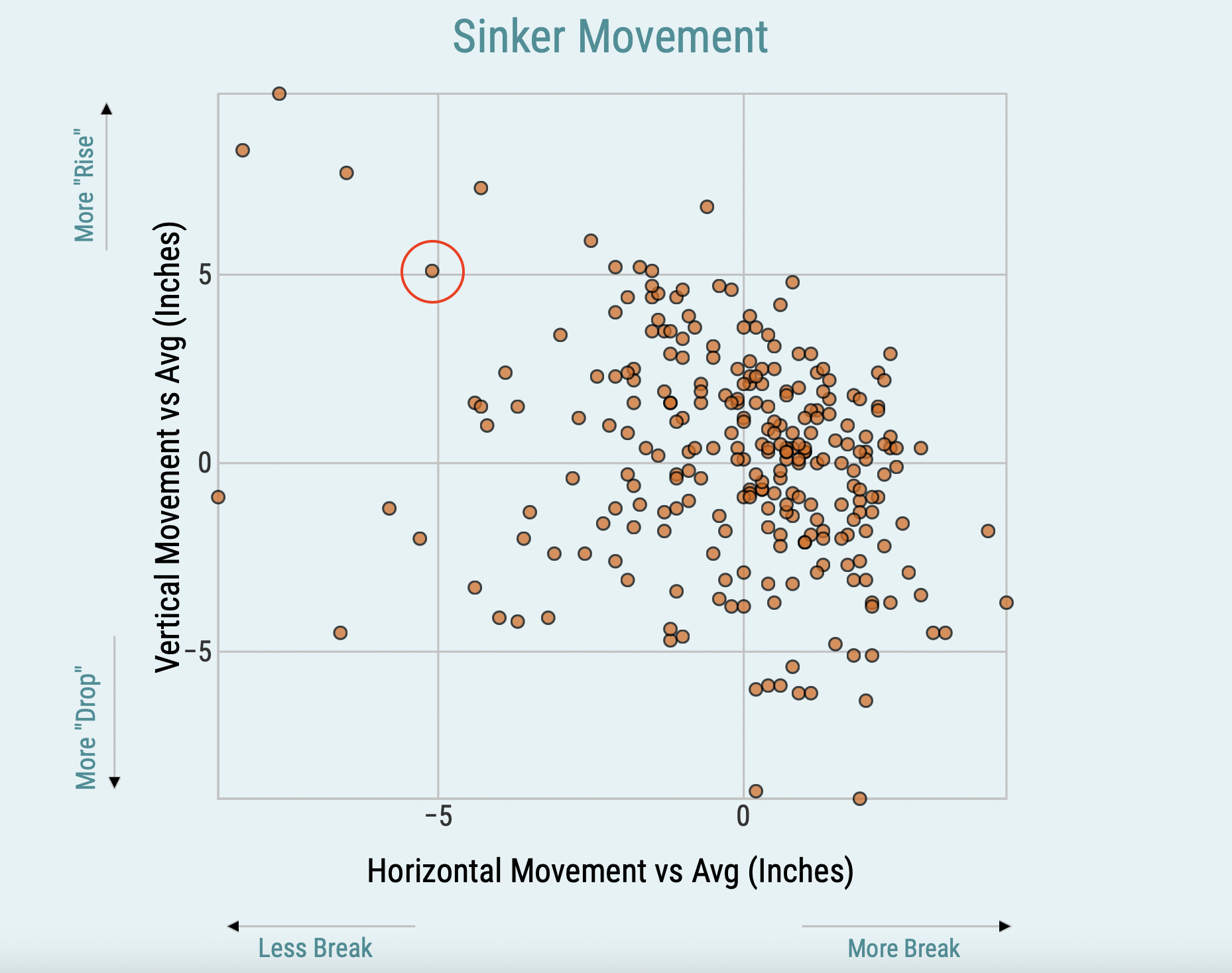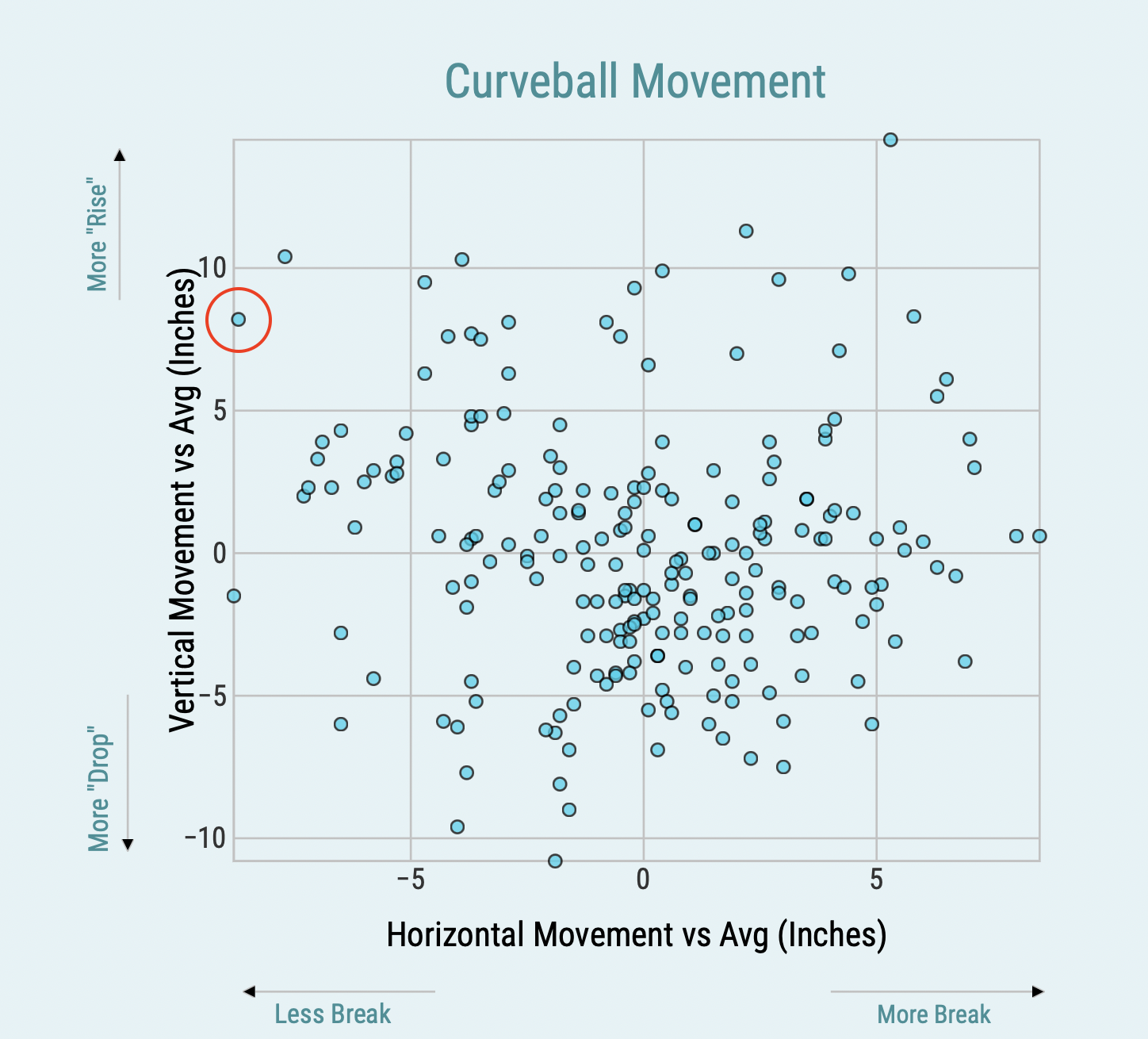Is Drew Smyly Finally Making Up Lost Ground?

Perhaps it’s too soon to say that Drew Smyly has turned his season around from the bullpen, but he’s certainly on the right track. In 22 starts this year, he pitched to a 5.40 ERA and a 5.32 FIP. Opposing batters slashed .274/.337/.501 against him; in other words, he turned the average hitter into Austin Riley. On the flip side, Smyly has a 3.72 ERA and 3.41 FIP in 19.1 innings of relief. Over the past month, he has looked even better. The small sample size disclaimer applies, but even so, his 2.61 ERA and 2.29 FIP are notable. His opponents are slashing .237/.293/.421; that’s less Riley and more Hunter Renfroe.
As a starter, Smyly wasn’t a big strikeout threat. Yet, as a reliever, he has struck out 27 of the 80 batters he has faced. That’s a 33.8% strikeout rate, or 12.57 K/9. Since his first relief appearance on July 22, he ranks among the top ten qualified NL relievers in both metrics. Even better, he has upped his strikeouts without giving out any more free passes. His 8.0% walk rate was run-of-the-mill for a starting pitcher, but his 7.5% rate is significantly better than average for a bullpen arm.
The pitch-level data helps to explain Smyly’s transformation into a strikeout artist. He’s throwing all three of his pitches with increased velocity and using his best whiff pitch, his curveball, more often. His zone rate is up, as is his chase rate, and as a result, he’s earning more whiffs and first-pitch strikes.
Now that I’ve thoroughly impressed you with tales of Drew Smyly reborn, it’s time to come clean. The veteran southpaw’s performance as a reliever isn’t the real reason I’m writing about him today. As good as he’s been, I need to see more than 11 appearances before I dub him the next Dennis Eckersley. But while I was comparing Smyly’s stats between the bullpen and rotation, one number stood out more than any other — more than the velocity, more than the walks, and even more than the strikeouts.
Pitching out of the bullpen, Smyly has upped his groundball rate. Groundball pitchers aren’t inherently better than fly ball pitchers, but in his case, keeping the ball on the ground is a smart idea. Not only do the Cubs have one of the best infield defenses in the league, but Smyly has also had quite a bit of trouble keeping the ball in the yard. His 1.83 HR/9 as a starter ranks ninth-highest in the majors (min. 100 IP).
What’s more, Smyly hasn’t just increased his groundball rate; he has increased it by a whopping 7%. That’s the difference between the average starter and Justin Steele, one of the premier groundball pitchers in the National League. Yet even so, Smyly’s groundball rate as a reliever is still below league average. Just how low was his groundball rate as a starter? Let’s just say it could be a song by Flo Rida featuring T-Pain. Among all starting pitchers this season (min. 100 IP), only nine others have induced a groundball on one-third or fewer of balls put in play. And even among that group, Smyly stands alone:
| Starter | GB% | Primary Fastball | Primary Offspeed/Breaking Pitch |
|---|---|---|---|
| Cristian Javier | 25.9% | Four-seam | Slider |
| JP Sears | 28.4% | Four-seam | Slider |
| Mike Clevinger | 29.9% | Four-seam | Slider |
| Tyler Wells | 31.0% | Four-seam | Changeup |
| Tyler Anderson | 31.2% | Four-seam | Changeup |
| Joe Ryan | 31.6% | Four-seam | Splitter |
| Bryce Miller | 32.4% | Four-seam | Slider |
| Max Scherzer | 33.2% | Four-seam | Slider |
| Bailey Ober | 33.3% | Four-seam | Changeup |
| Drew Smyly | 33.4% | Sinker | Curveball |
Smyly is the only one who throws a sinker as his primary fastball. Indeed, he’s one of only two primary sinker-ballers (along with Kyle Freeland) to have a groundball rate below 40%. He’s also the only starter with a groundball rate below league average who doesn’t throw a four-seam fastball at all. Sinkers tend to induce groundballs; therefore, the pitchers who throw them tend to be groundball pitchers. But not Smyly.
If you’re familiar with Smyly’s arsenal, you might point out that while he uses a sinker as his primary fastball, his primary pitch is actually his curveball. Yet outside of a sinker, no pitch type generates more groundballs than a curve. Among the 58 starters (min. 100 IP) who throw a curveball or a knuckle curve at least 10% of the time, only Max Scherzer has a lower groundball rate than Smyly, and Smyly uses his curve about four times as often as Scherzer.
The sinker and curveball account for just under 90% of all Smyly’s pitches, and his groundball rate is below league average on both. As a starter this season, he had a 37% GB% on his curve and a 29.1% GB% on his sinker; league average is about 46% and 55%, respectively. Clearly, his sinker is the true culprit, although his curveball isn’t helping matters. Of all the starting pitchers who have given up at least 10 groundballs on sinkers this year, none has a lower groundball rate than Smyly. This isn’t a new development, either. Over the last five years, he has a 30.5% groundball rate on the pitch.
So what makes his sinker unique? For one thing, Smyly doesn’t locate it in the typical fashion. Of all the sinkers he threw in the strike zone during his time as a starter, 43.6% were located in the upper third; league average is 23.6%. What’s more, all those high pitches came at the expense of sinkers down low. Only 16.7% of his sinkers in the zone were in the lower third against a league average of 42.2%. And as you might expect, high sinkers don’t generate nearly as many balls on the ground:
| Location | League Average GB% |
|---|---|
| Upper Third | 40.3% |
| Lower Third | 63.1% |
The numbers are even more extreme outside the strike zone. Of all the sinkers Smyly threw outside the zone, 83.8% were on the upper half of the area surrounding the strike zone — nearly twice the league average. He only threw 62 outside-the-zone sinkers on the lower half, and opposing hitters only swung at eight. Of those eight swings, only two led to balls in play, and neither was a grounder. Overall, Smyly had a 19.4% groundball rate on sinkers outside the strike zone, which is even lower than his groundball rate on pitches in the zone. For most pitchers, the opposite is true; getting batters to chase at a sinker can be the best way to generate groundballs.
With all that said, location still can’t explain everything. Smyly’s groundball rate is below league average up high, down low, and everywhere in between. No matter what, it just doesn’t generate groundballs like an ordinary sinker. And why is that? Because it isn’t ordinary. Smyly is one of only four pitchers with at least -5.0 inches of vertical and horizontal movement (vs. average) on his sinker. He’s in a region of his own on the chart below:

Indeed, his sinker moves a lot like a typical four-seam fastball. For comparison, here’s how it looks next to Paul Blackburn’s four-seam, a pitch with similar velocity. Smyly’s sinker has more arm-side run, but the two pitches have nearly identical vertical movement. Yet while Blackburn’s four-seam is perfectly average, Smyly’s sinker is a total outlier:
| Pitcher | Pitch | MPH | Vertical | Vertical (vs. Avg) | Horizontal | Horizontal (vs. Avg) |
|---|---|---|---|---|---|---|
| Drew Smyly | Sinker | 91.9 | 16.4 | -5.1 | 8.3 (Arm) | -5.1 |
| Paul Blackburn | Four-seam | 91.9 | 16.1 | -0.1 | 6.1 (Arm) | -0.4 |
His sinker lacks drop because it spins on such a vertical axis; more specifically, he throws it with backspin, allowing the pitch to resist the pull of gravity. It’s precisely the dropping action of a sinker that generates groundballs. Without that drop, Smyly can’t achieve the same results.
Interestingly enough, it’s a similar story with his curveball, which has significantly more rise than most curves and fits comfortably into its own little spot on the chart below:

A combination of location and movement explains why Smyly wasn’t generating groundballs as a starter, despite such a groundball-friendly arsenal. So here’s the million-dollar question: Can he really maintain a higher groundball rate as a reliever? It would certainly be in his best interest, what with Dansby Swanson, Nico Hoerner, and Nick Madrigal manning the infield behind him. The sample size is tiny so far, but I’m inclined to say that Smyly can keep it up.
On each individual pitch he throws, his groundball rate hasn’t actually gotten much higher. Currently, Smyly is running a 33.3% rate on his sinker and a 42.3% rate on his curve; as a starter, those numbers were 29.1% and 37%, respectively. But he’s been using fewer sinkers overall. Instead, he’s throwing more curves and more of his tertiary pitch, a cutter. The cutter plays a bigger role in his repertoire against lefties, and as a reliever, he has had the platoon advantage more often. Thus, he’s been throwing more cutters and inducing more groundballs as a result. His cutter has a higher groundball rate than either of his other pitches, and in fact, it’s his only pitch with a groundball rate higher than league average.
As long as Smyly continues to lean on his curveball and face more same-handed hitters out of the bullpen, therefore laying off his sinker, I don’t see why he can’t maintain a more respectable groundball rate. It’s not the typical advice you’d give to a pitcher who wants to generate more balls on the ground, but it seems to be the approach that works for him.
Stats and rankings as of September 14.
Leo is a writer for FanGraphs and MLB Trade Rumors as well as an editor for Just Baseball. His work has also been featured at Baseball Prospectus, Pitcher List, and SB Nation. You can follow him on Bluesky @leomorgenstern.com.

Excellent headline. Meg, was that you?
Haha, I’m taking full credit for this one – thanks!